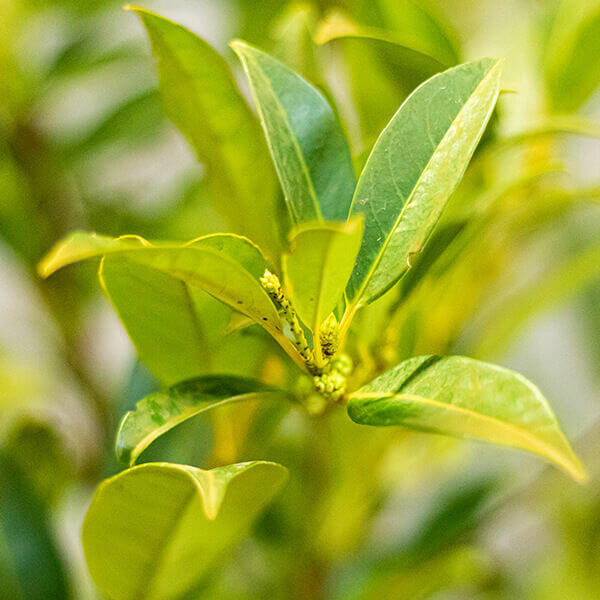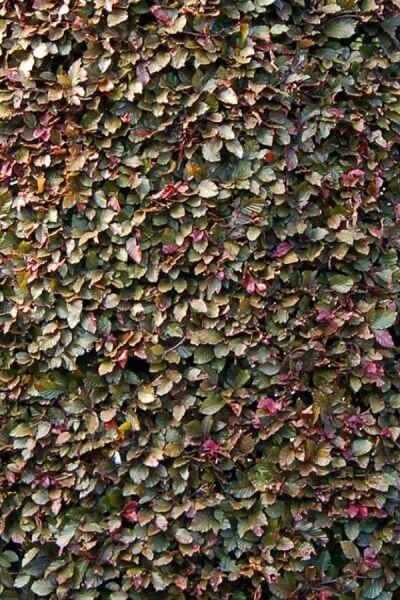Best Hedge Plants For Busy Roads
Best Hedge Plants For Busy Roads
Blog Article
Hedge Plants For Winter Berries
Boost your garden's attraction with lavish hedge varieties such as Yew (Taxus), Thuja, Laurel, Photinia, and Bamboo, celebrated for their structural integrity and ecological benefits.
Yew and Thuja provide evergreen coverage and winter season durability, while Laurel offers rapid growth and broad, fragrant leaves.
Photinia adds seasonal beauty with its lively red foliage, and Bamboo lends a low-maintenance, peaceful ambiance.
These hedges enhance air quality, minimize sound, and produce tranquil, private areas.
Appropriate planting, spacing, and maintenance ensure energetic development and ecological harmony.
Explore how these rich ranges can raise your garden's appeal and well-being.
Key Takeaways
Change Your Garden With Lush Hedge Ranges
- Select Yew for its dense, evergreen development and unrivaled durability.
- Opt for Laurel for its fast growth and broad leaves, ensuring fast personal privacy.
- Choose Photinia for its vibrant seasonal foliage, which turns a striking dark red.
- Use Bamboo for a low-maintenance, winter-hardy hedge with aesthetic appeal.
- Space plants 2-3 per meter and prune frequently for optimal development and health.
Popular Hedge Plants
When changing a garden with rich hedge varieties, it's vital to think about popular hedge plants such as Yew, Thuja, Laurel, and Photinia due to their unique characteristics and advantages.
Yew (Taxus) is extremely respected for its longevity and thick, green growth, making it a prime choice for sustaining landscapes.
Thuja is noted for its evergreen foliage and robust winter season durability.
Photinia adds seasonal vibrancy with red leaves that darken gradually, developing dynamic visual appeal.
Laurel uses fast growth and fragrant, broad leaves, perfect for fast privacy.
In Addition, Bamboo is an excellent option for ambiance, using a low-maintenance, winter-hardy alternative that improves the garden's aesthetic with its classy, swaying canes.
These choices deal with a range of horticultural needs and preferences.
Benefits of Garden Hedges
Garden hedges use a plethora of benefits, making them an important addition to any landscape. These natural barriers are cost-efficient to carry out and provide significant wind security, enhancing air circulation and adding to noise reduction. The dense foliage of hedges like Thuja and Beech ensures personal privacy by obstructing presence, developing a remote and peaceful environment.
Hedges likewise play an important role in microclimate guideline, offering a steady environment that fosters plant development and decreases temperature variations. Their complex leaf structures filter toxins, improving air quality and adding to a much healthier garden ecosystem.
Additionally, hedges excel in sound reduction, taking in and deflecting acoustic waves to lower ambient sound levels. This dual performance of supplying both acoustic and visual personal privacy boosts the overall harmony and aesthetic appeal of any garden.
Planting and Upkeep Tips
For a successful hedge, precise preparation of the planting location is important. Guarantee the soil has proper pH and drain to support strong root advancement.
Area the plants properly for the chosen types. Water the hedge often during its initial growth phase, changing as needed with seasonal changes.
Execute a methodical bug control and disease avoidance strategy, utilizing chemical or natural treatments when essential. Regularly check for aphids, mites, and fungal infections.
Apply mulch to keep wetness and reduce weeds. Seasonal pruning promotes thick growth and air blood circulation, important for plant health.
Following these standards will assist you cultivate a lively, well-maintained hedge that improves the appeal of your garden.
Spacing and Cutting Standards
Spacing and Trimming Standards
Correct spacing and cutting are crucial for cultivating healthy, visually appealing hedges. Adequate spacing ensures each plant receives adequate nutrients, light, and airflow.
Follow these guidelines for ideal hedge upkeep:
- Spacing: Position hedge plants 2-3 plants per meter to motivate robust growth.
- Pruning Methods: Regular pruning is important for maintaining desired hedge height and shape. Cut brand-new development in summer season and cut down older wood throughout winter season.
- Seasonal Care: Adjust trimming schedules and methods according to seasonal requirements to make sure plant health.
- Hedge Height: Regularly screen and cut to preserve the wanted hedge height and accomplish uniform visual appeals.
Abiding by these steps will guarantee your hedge flourishes, enhancing both the appeal and performance of your garden.
Choosing the Right Hedge
Picking the Right Hedge
Selecting the suitable hedge involves examining factors such as fully grown height, foliage density, and environmental durability. Effective hedge plant choice requires comprehending each species' growth characteristics and site-specific adaptability.
For instance, Yew (Taxus) uses exceptional durability and thick development, while Thuja is significant for its winter season durability. In addition, considering upkeep requirements is important; fast-growing types like Laurel or Privet need regular trimming, whereas low-maintenance options like Bamboo or Ivy may be more suitable for those looking for very little upkeep.
Ecological aspects such as soil type, light accessibility, and moisture conditions should likewise guide the choice procedure. This cautious technique guarantees the chosen hedges will thrive, offering both aesthetic and functional advantages to the garden landscape.
Shipment and Planting Suggestions
To ensure your hedge plants thrive, they must be provided by specialized couriers and planted without delay upon arrival.
Follow these important actions for successful planting:
- Soil Preparation: Enhance the soil with raw material to improve drainage and nutrient material.
- Planting Depth: Create a trench two times the width and equivalent to the depth of the root ball.
- Watering Techniques: Water thoroughly after planting, keeping the soil consistently damp however not filled.
- Mulching: Apply a layer of mulch to retain moisture and reduce weeds.
Consumer Assistance and Service
Given the essential function of prompt help in horticultural pursuits, our customer support team is available six days a week through telephone, email, and social media to provide professional recommendations and promptly resolve any issues. Their dedication to quick reaction times makes sure consumer satisfaction by dealing with inquiries associated with plant health, ideal planting techniques, and maintenance schedules.

Schedule
Within 24 hours
This thorough support group, enhanced by a stellar 9.3/ 10 client ranking, highlights our commitment to improving the gardening experience for each client.
Often Asked Questions
The Length Of Time Does It Consider Hedge Plants to Develop?
Hedge plants usually need one to 3 years to end up being fully established, with the specific period differing by types and growing conditions.
Reliable care throughout this important duration is vital for robust development. Consistent watering, watchful weed control, and suitable fertilizer application are pivotal in promoting strong root development.
For example, fast-growing types like Laurel might develop quicker, while slower-growing varieties such as Yew might take longer. Diligent upkeep speeds up the establishment process, resulting in healthy and thick hedges.
What Are the very best Hedge Plants for Privacy?
The question of the best hedge plants for privacy includes assessing evergreen and deciduous choices.
Evergreen hedges like Thuja, Laurel, and Cypress provide year-round protection, making sure continuous privacy.
On the other hand, deciduous hedges such as Beech provide seasonal privacy, shedding leaves in cooler months.
Secret maintenance tips for personal privacy hedges include regular cutting, fertilizing in spring, and proper spacing-- generally 2 to 3 plants per meter.
Additionally, constant watering and persistent weed elimination are important for promoting healthy, dense development.
Can Hedge Plants Draw In Wildlife to My Garden?
Yes, hedge plants can attract wildlife to your garden by offering important advantages like shelter, food, and nesting sites, therefore improving regional biodiversity. Yew, holly, and laurel are exceptional for attracting birds, while ivy supports a range of insects.
Nevertheless, it is essential to keep in mind that there are some drawbacks, such as increased maintenance to handle pests and regular maintenance. Carefully selecting and keeping hedge varieties can assist balance these advantages and downsides, eventually fostering a sustainable and dynamic environment in your garden.
Are There Any Blooming Hedge Plants Available?
Yes, there are flowering hedge plants readily available that can enhance the charm of your garden.
For instance, Elaeagnus, also referred to as Olive Willow, produces aromatic white flowers in the fall, including a touch of elegance.
Photinia, another popular choice, showcases lively red leaves that grow into a rich green, producing a vibrant visual effect throughout the seasons.
To guarantee these plants prosper, it's necessary to practice proper pruning techniques and seasonal maintenance, such as trimming brand-new development in the summer season and cutting down in the winter season.
These measures will help preserve the health and visual appeal of your blooming hedges.
How Do I Avoid Bugs in My Hedge Plants?
To avoid bugs in hedge plants, use natural pest control methods and maintain proper hedge care. Introduce advantageous bugs like ladybugs, which take advantage of hazardous insects, to produce a balanced community.
Routinely inspect your hedges for indications of problem and without delay remove any afflicted parts to avoid the spread. Make sure the health of your hedges by using well balanced fertilizers and offering sufficient water.
Utilize mulching to retain soil wetness and correct spacing to minimize plant stress and promote robust growth. These practices collectively assist in lessening insect problems and maintaining a healthy hedge.
Conclusion
In essence, choosing the ideal hedge ranges such as Yew, Thuja, and Laurel can transform any garden into a peaceful Browse this site haven. These plants supply year-round plant, enhance visual appeal, and offer practical advantages like sound reduction and wind protection.
Correct planting methods, accurate spacing, constant watering, and seasonal cutting are vital for optimum growth.
Reputable delivery services and skilled customer support ensure a seamless experience from purchase to planting, making it simpler than ever to elevate your outdoor space.
Garden hedges offer a wide range of benefits, making them a valuable addition to any landscape. These natural barriers are economical to implement and provide significant wind protection, enhancing air blood circulation and contributing to noise reduction. The thick foliage of hedges like Thuja and Beech makes sure personal privacy by obstructing visibility, developing a tranquil and remote environment.

Pruning Strategies: Regular pruning is vital for preserving desired hedge height and shape. Cut brand-new growth in summer and cut back older wood throughout winter.
Report this page